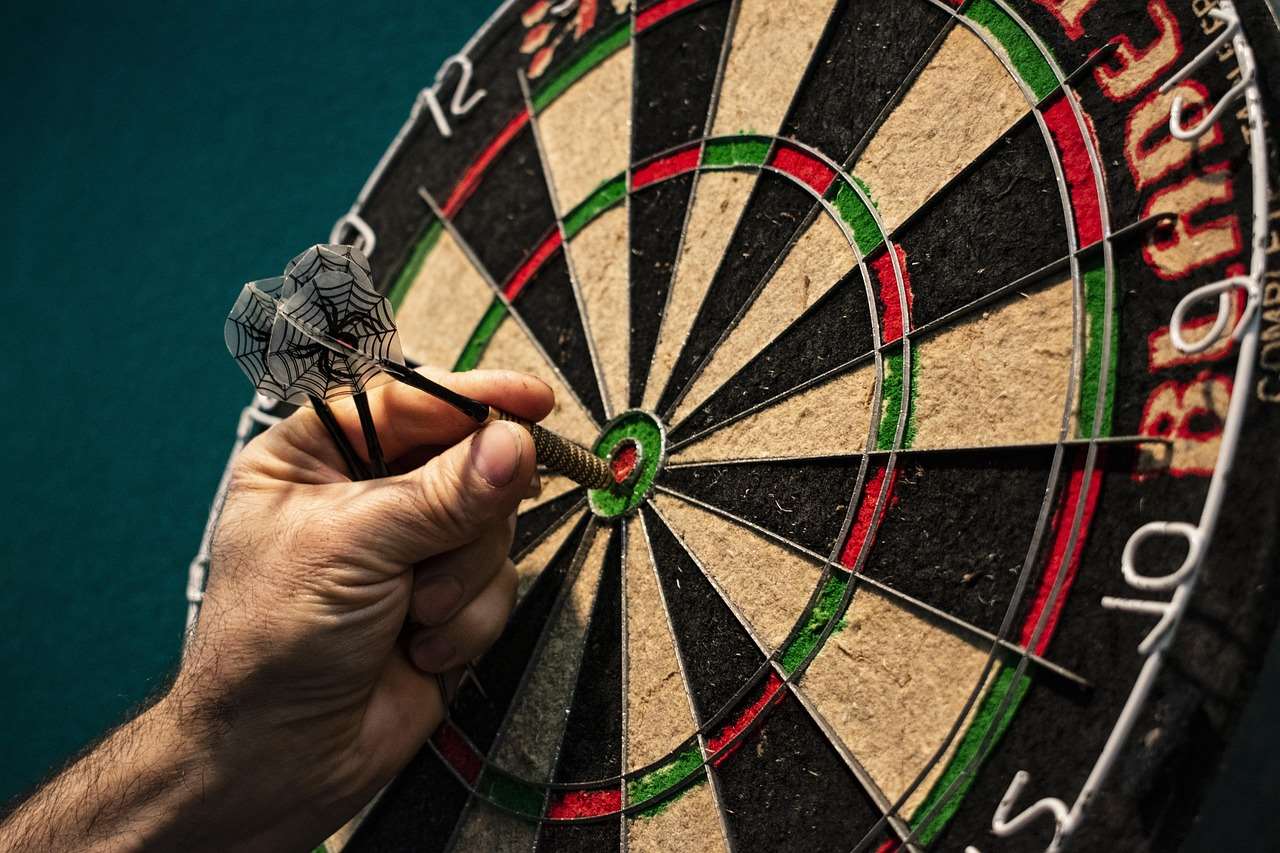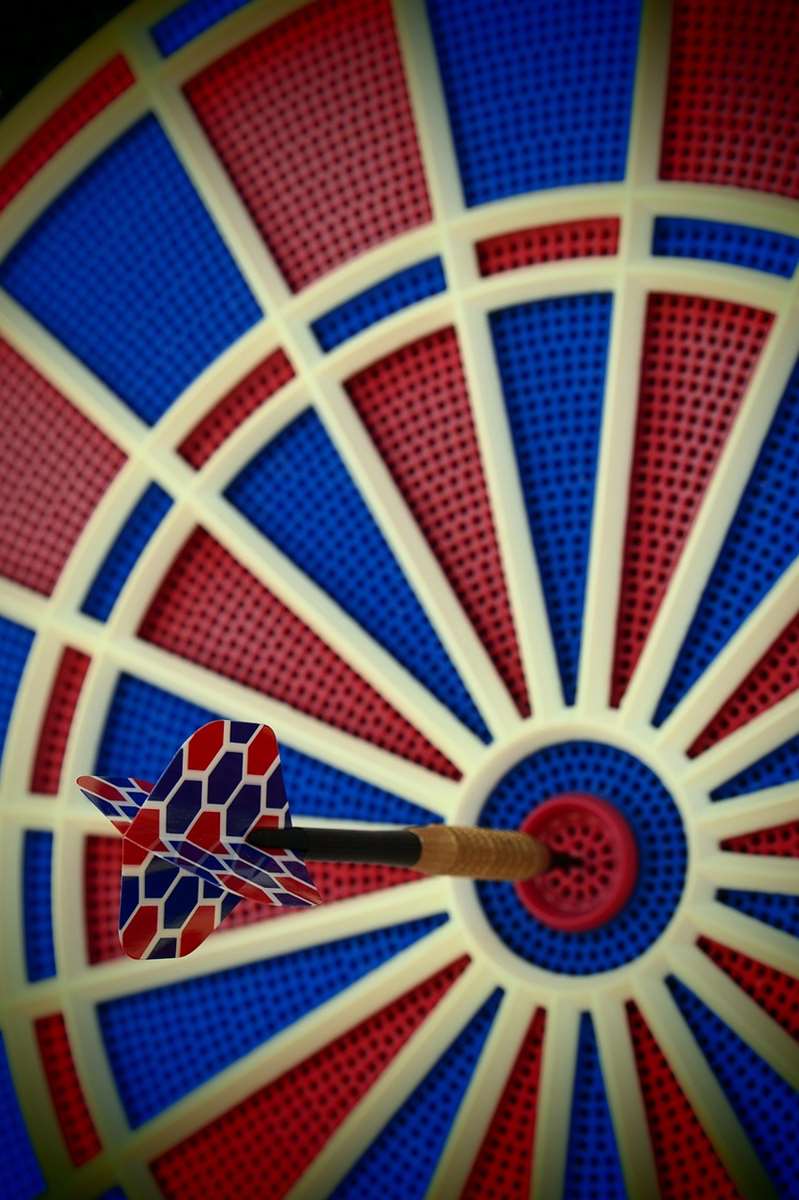Understanding dart player statistics is crucial for succeeding in fantasy darts, allowing you to make informed decisions when selecting your team; mastering **reading fantasy darts stats** enables you to predict performance and maximize your points. This article will break down the key metrics, explaining how to interpret them and use them to your advantage in your fantasy darts league.
⚠️ Still Using Pen & Paper (or a Chalkboard)?! ⚠️
Step into the future! The Dart Counter App handles all the scoring, suggests checkouts, and tracks your stats automatically. It's easier than you think!
Try the Smart Dart Counter App FREE!Ready for an upgrade? Click above!
Why Bother Reading Fantasy Darts Stats?
Many fantasy players choose their teams based on gut feeling or simply picking their favorite players. While passion is important, it’s not always the most effective strategy. **Reading fantasy darts stats** provides a data-driven approach, giving you a competitive edge. Imagine knowing a player excels under pressure, or consistently hits high scores on a particular double. This knowledge translates directly into better team selection and ultimately, more wins.
By delving into the numbers, you can identify hidden gems – players who may be underrated but possess strong underlying statistics. This gives you the opportunity to snap them up before your rivals do, giving you a significant advantage.

Key Darts Stats to Analyze for Fantasy Darts
Several stats are critical when evaluating a dart player’s potential for fantasy points. Let’s break down the most important ones:
- Average (PPR): This is the most basic but still vital statistic. It represents the average score a player achieves per three darts thrown. A higher average generally indicates a more consistent and skilled player. Look for players with consistent high averages.
- 180s per Leg: This indicates how often a player hits the maximum score of 180 in a single leg. More 180s generally mean more points, especially in fantasy leagues that reward them.
- Checkout Percentage: This shows how often a player successfully finishes a leg after reaching a double. A high checkout percentage demonstrates composure and accuracy under pressure.
- First 9 Darts Average: This reflects a player’s scoring ability at the start of a leg. A strong first 9 darts average puts them in a favorable position to finish the leg quickly.
- Legs Won Against the Throw (LWAT): This indicates a player’s ability to break their opponent’s throw. Players who consistently break throw are often mentally strong and capable of performing under pressure.
Beyond these core stats, consider looking at more specialized metrics like the percentage of darts hitting the treble 20 (T20) or the percentage of darts landing in the scoring zone. These can offer additional insights into a player’s strengths and weaknesses.
You might also look at Darts Betting And Fantasy Leagues Guide for an additional view.
Understanding Different Types of Averages
While the overall average is important, it’s crucial to understand that there are different ways to calculate it. Here’s a breakdown:
- Overall Average (PPR): As mentioned earlier, this is the average score per three darts across all legs played.
- Tournament Average: This reflects a player’s average performance within a specific tournament. It can be useful for gauging their form in that particular event.
- Head-to-Head Average: This shows a player’s average against a specific opponent. It can reveal how a player performs against certain playing styles.
Pay attention to the context of the average. A player might have a lower overall average but a higher average against a particular opponent, making them a good pick for a specific match.
Checkout Percentage: More Than Just a Number
Checkout percentage is a vital stat, but it’s important to understand its nuances. A high checkout percentage indicates a player’s ability to finish legs efficiently. However, it doesn’t tell the whole story.
Consider the following:
- The Difficulty of Checkouts: A player with a slightly lower checkout percentage might be attempting more difficult checkouts, such as those requiring a bullseye or a less common double.
- Pressure Situations: Look for data on checkout percentages in high-pressure situations, such as deciding legs or when the opponent is on a finish. This reveals a player’s mental fortitude.
Analyzing checkout percentage in conjunction with other stats provides a more complete picture of a player’s finishing ability.
Leveraging Head-to-Head Statistics
Head-to-head records are invaluable for fantasy darts. Some players consistently struggle against certain opponents, regardless of their overall form. This could be due to playing style clashes, mental blocks, or simply bad luck.
Before selecting your team for a particular match, always check the head-to-head record between the players. If one player has a significant advantage, it might be wise to favor them, even if their overall statistics are slightly weaker.

Identifying Value Picks
One of the biggest advantages of **reading fantasy darts stats** is the ability to identify value picks. These are players who are underrated by other fantasy managers but possess strong underlying statistics that suggest they are poised for a breakout performance.
Here’s how to find them:
- Look for Rising Stars: Identify players who are relatively new to the professional scene but are showing promising statistics. They might be undervalued due to their lack of name recognition.
- Focus on Recent Form: Pay attention to players who have been performing well in recent tournaments, even if their overall season statistics are not outstanding. This indicates they are in good form and likely to continue performing well.
- Analyze Underlying Metrics: Dig deeper than just the basic averages. Look for players who excel in specific areas, such as hitting 180s or having a high first 9 darts average. These strengths might be overlooked by other fantasy managers.
By identifying value picks, you can assemble a team that outperforms expectations and gives you a significant edge in your fantasy league.
The Importance of Sample Size
When **reading fantasy darts stats**, always consider the sample size. A player’s statistics over a small sample size (e.g., one or two matches) might be skewed by luck or unusual circumstances. It’s generally more reliable to rely on statistics gathered over a larger sample size, such as a whole season or multiple tournaments. A player who played well last year is a good starting point, but don’t ignore those improving rapidly.
For example, a player might hit an unusually high number of 180s in a single match, inflating their average for that day. However, if their 180s per leg ratio over the entire season is significantly lower, it’s likely that the one-off performance was an outlier.

Adjusting for Tournament Format
Different darts tournaments have different formats, which can impact player statistics. For example, some tournaments feature shorter legs, which may favor players with strong scoring ability but weaker finishing skills. Others have longer legs, which reward players with greater endurance and mental fortitude.
When analyzing player statistics, take into account the tournament format and adjust your expectations accordingly. A player who excels in shorter legs might not perform as well in longer legs, and vice versa. Look at prior performance in the same or similar tournament formats.
Understanding Bookmaker Sponsorship Professional Darts could influence your view of players in certain events.
Staying Up-to-Date with the Latest Stats
Darts statistics are constantly evolving, so it’s important to stay up-to-date with the latest information. Follow reputable darts news websites and statistical databases to track player performance and identify emerging trends.
Regularly review your team’s performance and make adjustments as needed. Don’t be afraid to drop players who are underperforming and pick up players who are showing promise. The key to success in fantasy darts is to be proactive and adaptable.
Using Stats to Predict Match Outcomes
While statistics can provide valuable insights, they are not always a perfect predictor of match outcomes. Darts is a sport that is also influenced by psychology, momentum, and luck. However, by combining statistical analysis with other factors, you can increase your chances of accurately predicting match results.
Consider the following factors in addition to statistics:
- Player Form: How has the player been performing in recent matches? Are they playing with confidence?
- Mental State: Is the player under pressure? Are they dealing with any personal issues?
- Playing Style: How does the player’s playing style match up against their opponent?
- Crowd Support: Will the player have the support of the crowd?
By taking all of these factors into account, you can make more informed decisions when selecting your fantasy darts team and increase your chances of winning.

Combining Stats with Live Viewing
While stats are important, watching the matches is equally crucial. Live viewing allows you to assess factors that numbers alone can’t capture – a player’s body language, their reaction to pressure, and the overall atmosphere of the match. Combining statistical analysis with live viewing provides the most comprehensive understanding of a player’s performance and potential.
You can also see which players might benefit from Betting Sponsorship Media Coverage
Advanced Stats: Beyond the Basics
For those looking to take their fantasy darts game to the next level, exploring advanced statistics can provide a significant advantage. Some examples include:
- DartConnect Performance Statistics (DCPS): This system provides a comprehensive suite of advanced statistics, including detailed analysis of scoring, finishing, and doubling accuracy.
- True Throw Average (TTA): This metric adjusts the average score to account for missed doubles and other factors that can skew the overall average.
- Clutch Performance Rating (CPR): This measures a player’s performance in high-pressure situations, such as deciding legs or when the opponent is on a finish.
These advanced stats can provide a deeper understanding of a player’s strengths and weaknesses, allowing you to make more informed decisions when selecting your fantasy team.

Putting It All Together: Building Your Fantasy Team
The key to success in fantasy darts is to use a combination of statistical analysis, live viewing, and intuition to build a team that outperforms expectations. Here’s a step-by-step guide:
- Research: Gather as much information as possible about the players you are considering, including their statistics, head-to-head records, and recent form.
- Analyze: Evaluate the data and identify players who are undervalued or who have a favorable matchup.
- Watch: Watch the matches to assess the players’ form, mental state, and playing style.
- Trust Your Gut: Sometimes, your intuition is the best guide. Don’t be afraid to take a chance on a player who you believe has the potential to perform well.
Conclusion: Mastering the Art of Reading Fantasy Darts Stats
**Reading fantasy darts stats** isn’t just about crunching numbers; it’s about gaining a deeper understanding of the game and the players who compete in it. By mastering the art of statistical analysis, you can identify value picks, predict match outcomes, and ultimately, build a fantasy team that dominates your league. Remember to consider sample size, tournament format, and the human element of the game. Stay updated, combine stats with live viewing, and never stop learning. The next step is to dive into the stats yourself and start building your winning team – good luck!
Hi, I’m Dieter, and I created Dartcounter (Dartcounterapp.com). My motivation wasn’t being a darts expert – quite the opposite! When I first started playing, I loved the game but found keeping accurate scores and tracking stats difficult and distracting.
I figured I couldn’t be the only one struggling with this. So, I decided to build a solution: an easy-to-use application that everyone, no matter their experience level, could use to manage scoring effortlessly.
My goal for Dartcounter was simple: let the app handle the numbers – the scoring, the averages, the stats, even checkout suggestions – so players could focus purely on their throw and enjoying the game. It began as a way to solve my own beginner’s problem, and I’m thrilled it has grown into a helpful tool for the wider darts community.